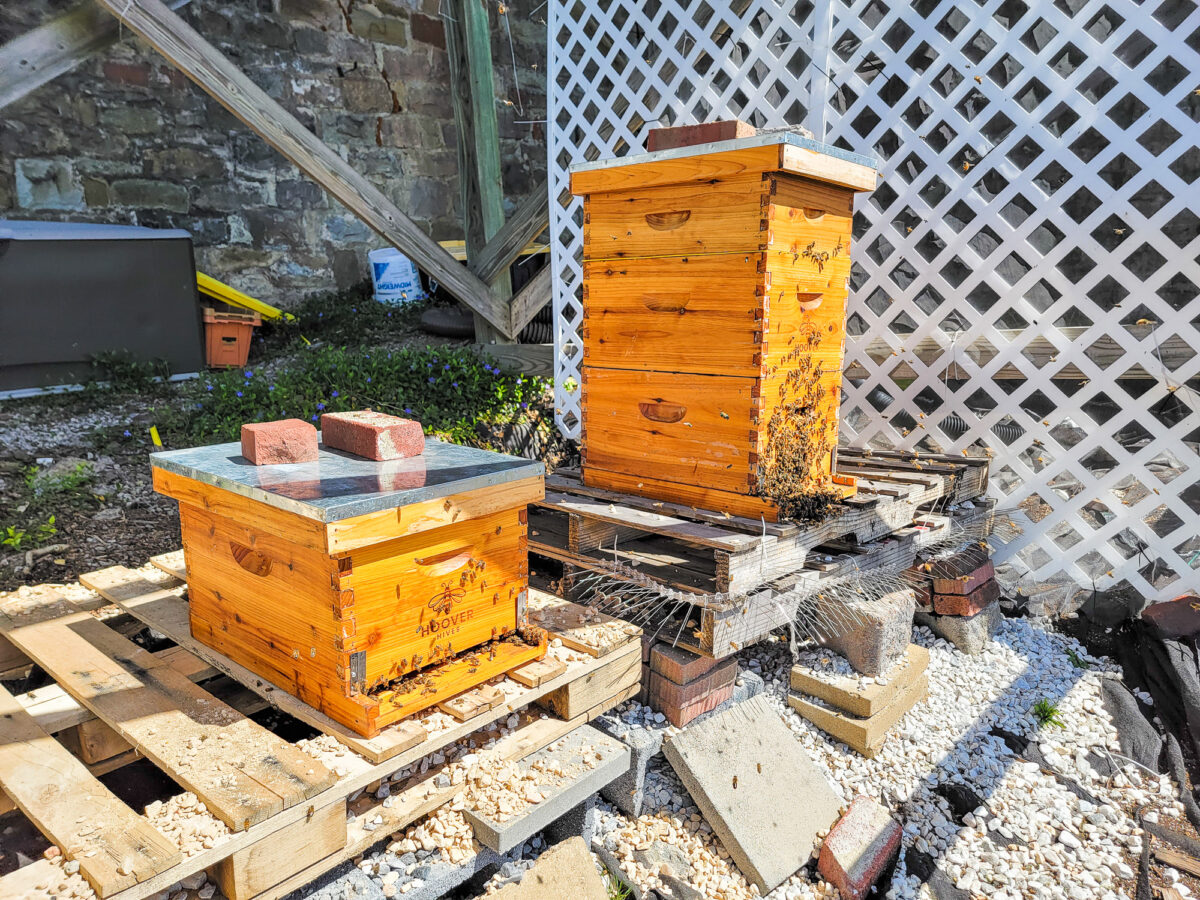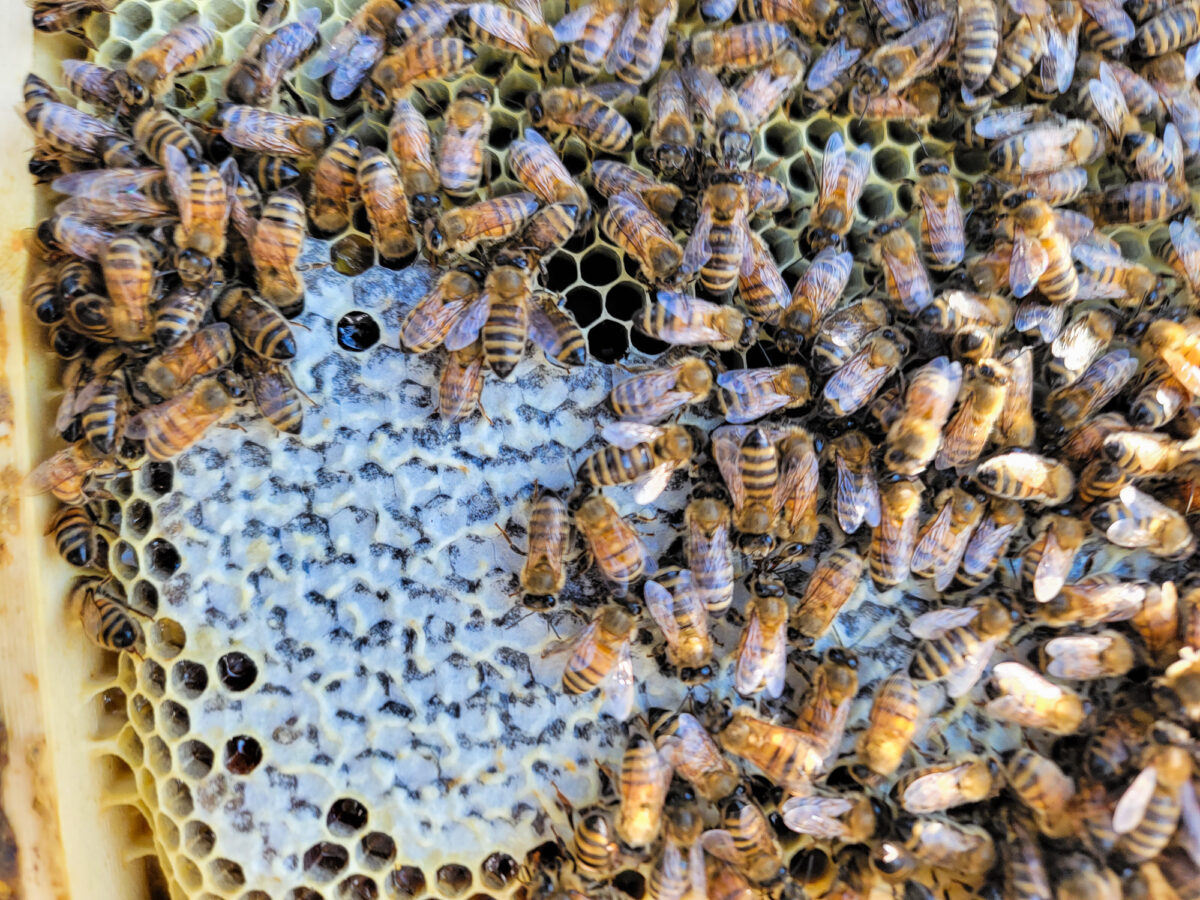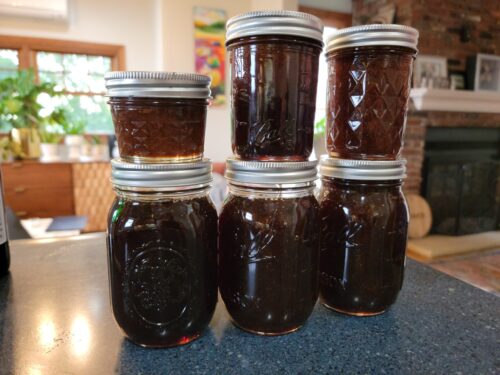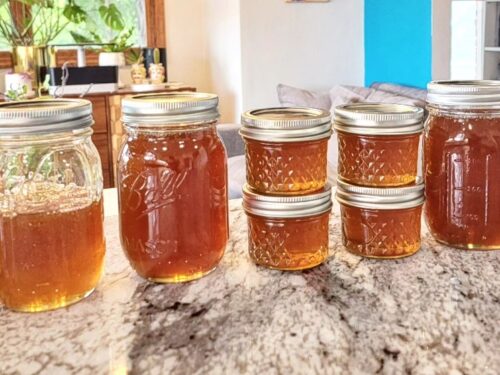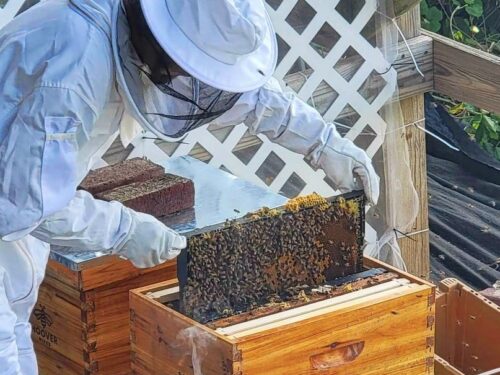Disclaimers: Our site uses demographic data, email opt-ins, display advertising, and affiliate links. Please check out our Terms and Conditions for more information.
When I got into beekeeping, I learned a lot through trial and error. Although I came across many great tips via courses, books, and online groups, there were some things that I really needed to either see firsthand or, ideally, have someone beat me over the head repeatedly until I understood the implications inside and out.
So in this one, I thought it would be fun to focus on that latter point, particularly, what should new beekeepers should be aware of.
This one is not so much a list of casual observations that new beekeepers should know, but rather must know details that I wish I would've known inside and out when getting started. Overlooking some of these details can really make your beekeeping journey far more difficult!
Start With at Least Two Bee Hives
Before getting into beekeeping, there is one recommendation you're going to see again, and again, and again- start with at least two beehives.
We're going to stay it, too. Start with at least two beehives.
There are many reasons for this, and every explanation you'll see is likely valid. Having two hives lets you compare hive health and activity- identifying stronger or weaker hives throughout a season. Having two hives lets you adjust if one hive is failing (such as moving frames of larva over if a queen dies). Having two hives lets you still have a colony if one fails, while being able to split back into two the following spring during swarm season.
I could even make an argument that having more than one hive is economical with the cost of equipment and time- I spend almost as much time getting ready to inspect my hives than I do inside all four of my hives, for example.
Of course, if, for whatever reason, you can only have one hive, don't panic. That is okay. If the options are one or nothing, I'd still go with one. But just know you will be at a disadvantage for many of the reasons outlined above. Having at least two hives really is the right move here.
- Looking to buy new beehives? Use code HIPSTERHOMESTEADERS to take 5% off your order at Galena Farms.
Upgrade to a Quality Suit and Gloves

We'll be the first to admit that it is really easy to spend a crazy amount of money on a bunch of gear and tech when it comes to beekeeping.
But there is one element you should not skimp on, and that is your bee suit.
There are many reasons for this, but the most important ones are simply that a good bee suit has multiple layers, often with mesh components, to be breathable and to help minimize stings due to being layered and decently baggy.
There is nothing worse than having a suit go tight on your back to feel that inevitable pinch before standing up, having the suit loosen up, and pulling the stinger out along with it. With a baggy, layered suit, instances like this are minimized.
Likewise, not all bee gloves are created equally, and I've tested many pairs that run the spectrum from thick and robust to thin and fragile. For the latter, it was only a matter of time before that familiar pinch of a sting happened, and I never wore those gloves again.
- We like ultra ventilated suites with multiple layers, like this one. That said, we often buy much thicker gloves than what comes with suits for added protection.
Join Beekeeping Groups (Even if Just Online)
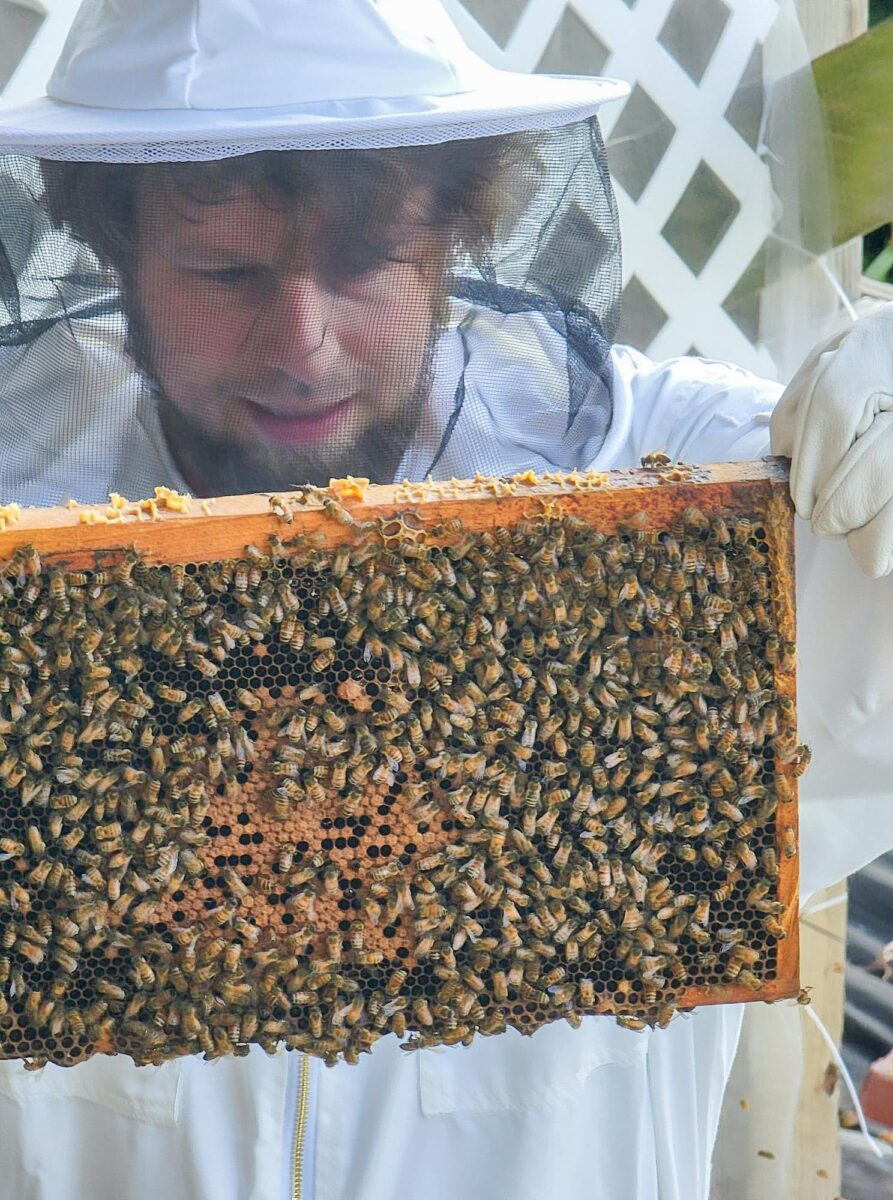
Another thing you'll often read about again and again when starting out is “get a mentor.” While I have to admit that I never had a personal mentor myself (likely to my detriment), I do question whether that is necessary in this day and age.
This is because there are so many beekeeping books, online courses, and social media groups out there with a wealth of resources and knowledge out there to have a defacto mentor in a pinch.
Yes, it really is hard to beat a real-life mentor who can show you their hive or, even better, join you for an inspection of your own hives. But without that, these groups and courses are the next best thing.
I have lost count of the number of times a post in a state-level beekeeping group has helped me in my own beekeeping journey, and I even took several online courses before getting bees to be familiar, in theory at least, of what to expect at every step of the way.
- If joining social media groups, I've often found that state/regional level groups are much better as the group size is small, people are friendlier, and you have regional-specific posts (like weather, flow, and dearth concerns) appear regularly. Broader groups, often with larger members, have been prone to spam and, in some cases, rude members who are upset that someone posted the same question for the 10,000th time. I have left all of the latter and am only in groups specific to my area. So head over to Facebook and search “[State/City/Region] Beekeepers” and see what you find.
Bees Have Some Fun Moods

When getting into your beehives, you should be prepared for anything. While I am not sure if bees have emotions, you can definitely feel something akin to emotion in every inspection.
Sometimes a hive can be incredibly docile and not care that you're there. Other times they can be outright angry and have dozens upon dozens of bees coming right at you in a flurry. This could be environmental (bees can be more aggressive during dearth), because of something you did (smoking properly vs not, if you're extracting honey, etc.), or an indication that something is wrong (queenless colonies also tend to be angry).
But perhaps even more interesting is that these experiences can change in an instant. The first hive you inspect may be quite defensive and mad at your presence. The next hive over may not care. Revisit a few weeks later, they may flip. It all really depends.
As such, while you may see some beekeepers on social media get into their hives without any protective gear, it is worth noting that you simply can't expect your bees to act the same on every inspection. They absolutely will not.
Bees Can Be Reluctant to Draw Supers

One issue that took me way too long to figure out (likely due to lack of a mentor telling me about it) is that bees can be quite reluctant to draw and fill supers.
The simple explanation here is that bees will not expand into new hive boxes unless they have an incentive to do so. In many cases, this is simply because the lower chambers are fully loaded and they have nowhere else to go. In others, it may be because there is the scent of the queen or drawn frames offering them a reason to move further up the hive.
Throw on a queen excluder between boxes, and that may be enough to get bees to simply ignore your supers altogether.
This is what happened to me, and I was shocked by how fast my supers began to get drawn out once I removed my queen excluder and let the bees expand naturally without any extra barriers in place.
As such, it is highly recommended to simply leave queen excludes off of your hive until your bees have drawn out a sufficient percentage of your frames. Then all you have to do is make sure your queen is in a lower chamber, add an excluder back on, and the bees will take care of the rest- hopefully adding extractable honey along the way!
Bees Mostly Take Care of Themselves (Except for a Few Things)
Beekeeping often sounds like a pretty time-consuming hobby, and it very much can be if you are trying to inspect every frame of every hive and micromanage what your bees are doing. But, in reality, bees kind of take care of themselves outside of a few key instances.
Bees survive quite fine without humans, and this is true even in an agricultural setting.
Honestly, apart from checking for general hive health, in most inspections, I simply pull frames until I see the queen and/or signs of her presence (e.g., eggs or larva), and that is that.
Unless there is an active issue in the hive, like not having signs of a queen, building up swarm cells, or other colony health issues, I honestly leave the hive alone most of the time. They really take care of themselves, and we are just here to monitor and correct any issues as they come up.
Sure, some people can be much more proactive, but honestly, bees know what they're doing, and I'm far more likely to kill a queen (and, subsequently, the entire hive) over most other issues that are out there. So apart from making sure the queen is okay, annual mite treatments, and splitting my hives in the spring, I really try to let the bees keep to themselves.
I am the biggest threat to my hives.
Have a Swarm Control Plan in Place
Finally, one of the final things a beekeeper should do is have a swarm control plan in place.
As much as I want to say that I am pretty hands-off on my beehives outside of mite control and monitoring the queen, this is one area that isn't negotiable in my mind. When bees come out of winter hibernation and fill their hive, they will have a natural tendency to swarm. You must have a plan in place to account for this.
Some beekeepers let their hives swarm and hope that the remaining bees rear a queen and start a new colony. Others replace with a new nuc. But most beekeepers will do a beehive split, and expand one beehive into two- using the natural swarming tendencies to expand their apiary. Whatever you choose to do is up to you, but you need to have a plan in place for whatever solution you devise.
For me, I almost always do a split. But I do have a problem in that I am zoned for a maximum of four hives, so at the end of splitting my hives, I really can only come out with a max of four before I have to give the new nucleus colonies away or sell them. Funnily enough, so far I've never had to worry about this, though, as I've only ever had a maximum of two hives survive winter either because I lost a queen in the fall or my mite control methods didn't work. In these instances, my two hives returned back to four, and a new balance was achieved on its own.
Still, you cannot guarantee what will happen, and the safest assumption will be that any surviving bee hive to spring will need to be split- so have a plan in place on what you want to do when nearing swarm season!
Do you have any lessons learned about beekeeping that you wish you knew when getting started? Comment below to share!
Start an Apiary Today
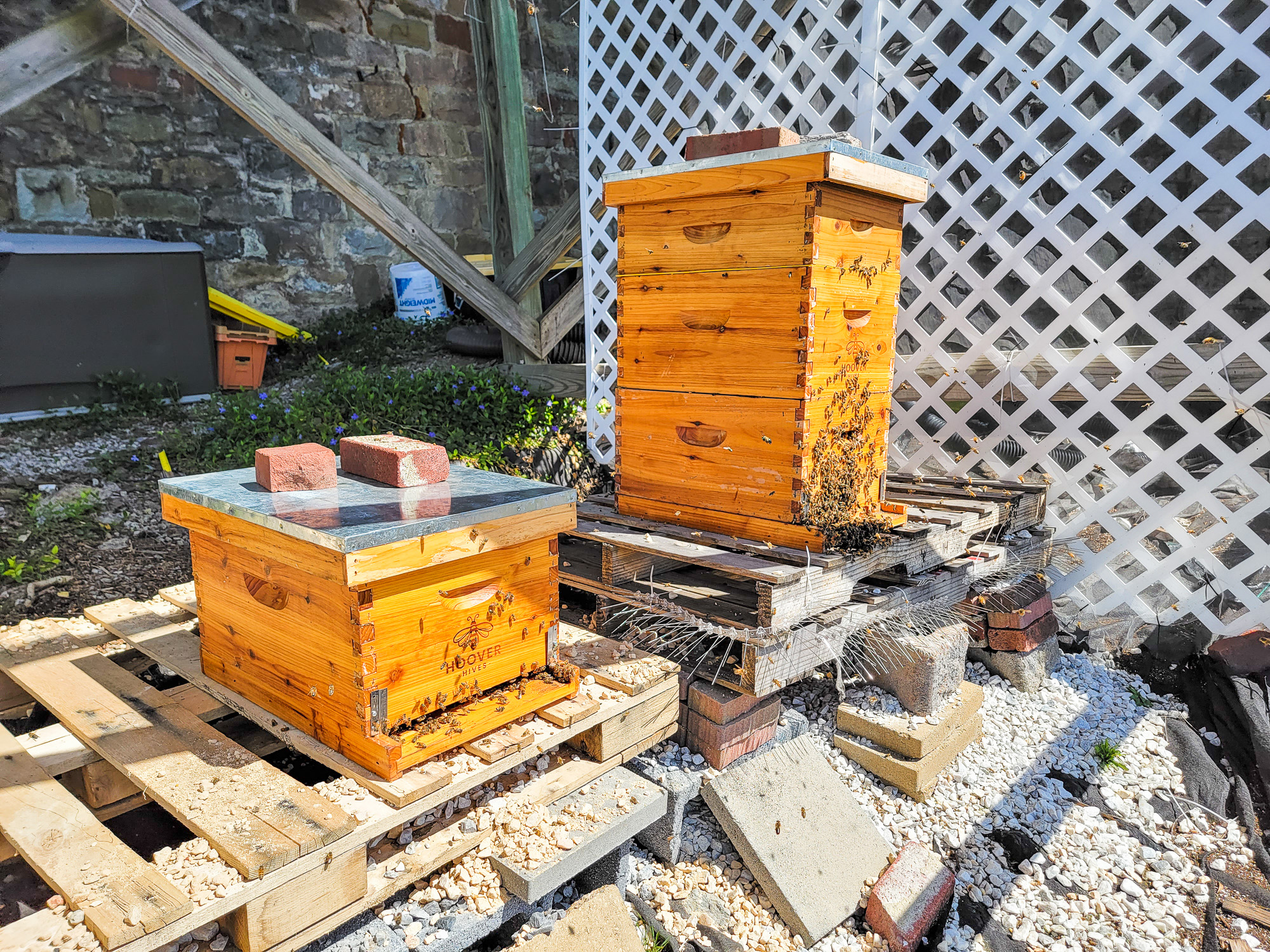
Looking to get into beekeeping? Pick-up preassembled waxed Hoover Hives from Galena Farms. Use discount code HIPSTERHOMESTEADERS to take 5% off your order!


